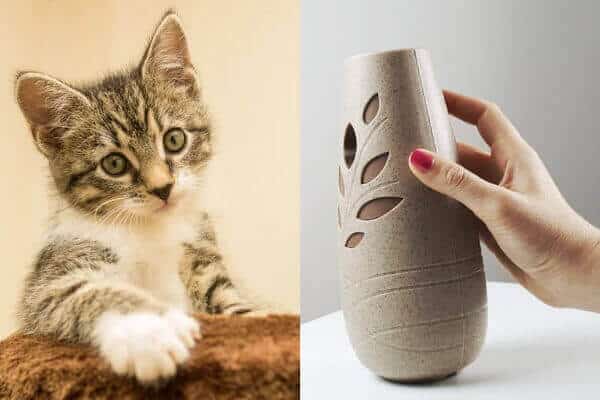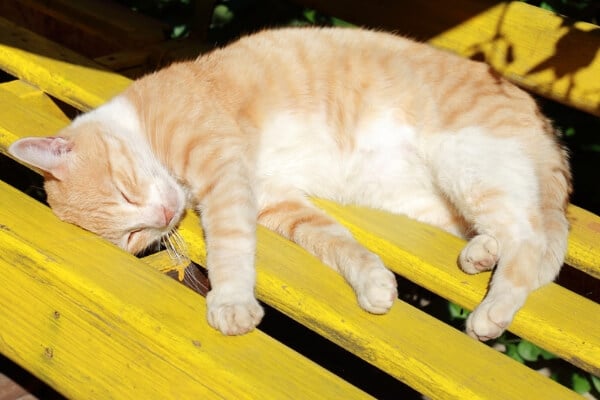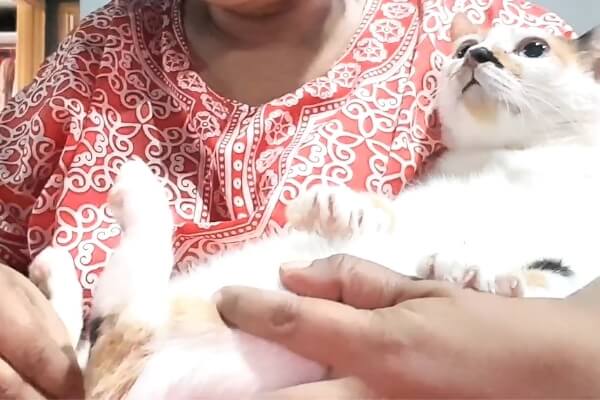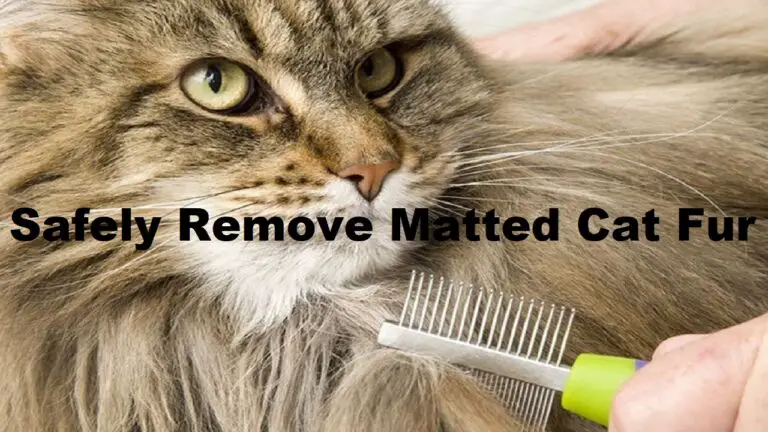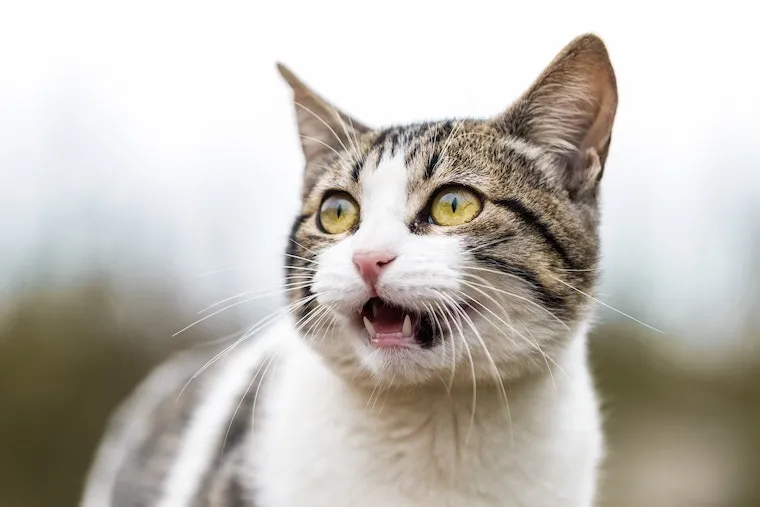When Is A Cat Too Old For Dental Cleaning?
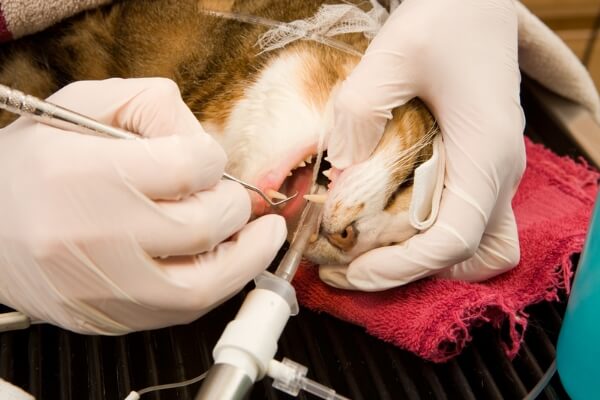
As the years gracefully adorn our feline friends with wisdom and maturity, it becomes our responsibility to reciprocate their love and loyalty with the best possible care. Among the many facets of their health, dental well-being stands as a vital pillar of their overall vitality. Just like humans, cats can develop dental issues as they age, leading to discomfort and potential health complications. So, the question arises: when do we draw the line for dental cleaning in senior cats?
There is no specific age at which cats are deemed too old for dental cleaning. Cats are considered seniors around 11-12 years old, but even at this age, they can undergo dental cleaning if their overall health allows for sedation. Older cats benefit significantly from oral care, as they are more susceptible to tooth resorptions. Therefore, age alone should not deter owners from seeking dental cleaning for their senior feline companions. Instead, it is essential to assess the cat’s overall health and consult with a veterinarian to determine if dental cleaning is suitable for them.
While the prospect of dental cleaning for an older cat may raise concerns about anesthesia and potential complications, it is essential to recognize that modern veterinary practices have improved to accommodate the needs of senior felines. With improved anesthesia techniques and comprehensive pre-operative evaluations, veterinarians can ensure the safety and well-being of their feline patients during dental procedures.
Read Also: At What Age Should You Stop Scruffing A Cat? When Is Too Old?
Jump to Section
Do Cats Get Too Old For Dental Cleaning?
Just like any other medical procedure, there are age-related considerations and potential risks involved. Dental cleaning is essential for maintaining a cat’s oral health, preventing dental disease, and potentially avoiding other health issues that can arise from untreated dental problems. However, as cats age, their overall health may become more fragile, making anesthesia, which is necessary for a thorough dental cleaning, riskier for older cats.
Anesthesia is typically required for dental cleanings in cats because it allows the veterinarian to clean beneath the gum line and address any underlying dental issues effectively. Older cats may have a higher chance of developing health conditions such as heart or kidney problems, which could complicate the administration of anesthesia. They may also have weaker immune systems, making them more susceptible to infections after the dental procedure.
Veterinarians often conduct a thorough pre-anesthetic evaluation, including blood tests and a physical examination, to assess an older cat’s suitability for anesthesia. Based on the results, the veterinarian will determine if the cat can safely undergo dental cleaning. In some cases, if the risks associated with anesthesia are deemed too high, alternative approaches such as non-anesthetic dental cleanings or managing dental issues with medications may be considered.
However, each cat is unique, and decisions regarding dental cleaning for older cats should be made in consultation with a qualified veterinarian who can assess the cat’s health status and determine the best course of action to maintain its overall well-being.
What Happens If I Don’t Get My Cat’s Teeth Cleaned?
Dental care is essential for cats, just as it is for humans. Poor dental hygiene can cause discomfort, pain, and even systemic health issues. Here are some of the consequences of neglecting your cat’s dental health:
1. Dental Plaque And Tartar Buildup
Without regular dental cleaning, cats are prone to developing dental plaque and tartar. Plaque is a sticky film of bacteria that forms on the teeth, which, if not removed, can mineralize into tartar or dental calculus. As tartar accumulates, it provides a rough surface for more plaque to adhere to, leading to a vicious cycle of bacterial growth. The presence of plaque and tartar not only discolors teeth but also poses a significant threat to oral health, potentially leading to more severe issues if left untreated.
Over time, the buildup of dental plaque and tartar can irritate the gums and cause inflammation, leading to various dental problems.
2. Gingivitis
Gingivitis is a common consequence of poor dental hygiene in cats. It occurs when the gums become inflamed due to the accumulation of plaque and tartar along the gumline. Redness, swelling, and tenderness of the gums are typical signs of gingivitis.
If left unchecked, gingivitis can progress into more severe forms of periodontal disease, affecting not only the gums but also the supporting structures of the teeth.
3. Periodontal Disease
When gingivitis is left untreated, it can escalate into periodontal disease, which is an advanced stage of gum disease. At this point, the infection reaches the deeper structures supporting the teeth, including the periodontal ligament and the alveolar bone. As the disease progresses, pockets of infection can form around the tooth roots, leading to further deterioration of the supporting tissues.
This can eventually result in tooth loss, severe oral pain, and potential infections spreading to other parts of the body.
4. Oral Pain And Discomfort
As dental issues escalate, cats may experience considerable oral pain and discomfort. They might avoid eating or have difficulty chewing, leading to a decline in appetite and weight loss. The pain can also cause behavioral changes, such as increased irritability, restlessness, or aggression.
Unfortunately, cats are masters at hiding pain, so by the time visible symptoms manifest, the dental problems may already be quite advanced.
5. Bad Breath (Halitosis):
Foul-smelling breath or halitosis is a common sign of dental problems in cats. The accumulation of bacteria and decaying food particles in the mouth contributes to the unpleasant odor. While it’s normal for a cat’s breath to have a slight odor, persistent and extremely foul breath is a red flag that should not be ignored.
Risks Of Dental Cleaning In Older Cats
Dental cleaning on older cats although safe sometimes, poses some risks that should not be overemphasized.
1. Anesthesia Reactions
Older cats may have compromised health conditions, such as heart or respiratory issues, which can increase the risk of adverse reactions to anesthesia. Anesthesia can put significant stress on the cardiovascular and respiratory systems, and in some cases, it may lead to cardiopulmonary arrest. There is also a risk of anaphylactic shock if your cat is allergic to the anesthesia being used. Monitoring the cat’s vital signs and having a thorough pre-anesthetic evaluation can help identify potential risks before the procedure.
Using modern anesthetic agents and monitoring equipment, along with skilled veterinary professionals, can minimize the likelihood of such reactions. However, the risk remains, and pet owners need to be aware of these potential complications before deciding to proceed with dental cleaning in an older cats.
2. Hypotension
Hypotension, or low blood pressure, is another potential risk during dental cleaning in older cats under anesthesia. The anesthetic drugs used can cause blood pressure to drop, particularly in older animals with pre-existing cardiovascular conditions. Hypotension can result in reduced blood flow to vital organs, including the kidneys, liver, and brain, leading to potential organ dysfunction.
Veterinarians take precautions to prevent and manage hypotension by administering intravenous fluids, adjusting anesthetic doses, and closely monitoring blood pressure during the procedure. Nevertheless, older cats may still be more susceptible to this complication, and careful consideration of their overall health status is crucial before proceeding with dental cleaning.
3. Hypothermia
Older cats are more susceptible to anesthesia-induced hypothermia due to reduced metabolic rates and a decrease in their ability to regulate body temperature. Anesthesia can impair the cat’s ability to shiver and conserve heat, leading to a drop in body temperature. Prolonged hypothermia can be detrimental, potentially affecting blood clotting, immune function, and wound healing.
To combat this risk, veterinarians employ various techniques to maintain the cat’s body temperature during the procedure, such as using warm blankets, heated IV fluids, and temperature-controlled environments. Maintaining appropriate body temperature is crucial to ensure the safety and well-being of the older cat during and after the dental cleaning procedure.
4. Infections
Older cats may have a weaker immune system, making them more susceptible to infections, including those that may arise as a result of dental cleaning. Bacteria in the mouth can enter the bloodstream during the procedure and spread to vital organs, leading to potentially serious complications.
Veterinarians follow strict protocols to minimize the risk of infections by using sterile equipment and antibiotics when necessary. Pre-existing health conditions can further increase the vulnerability to infections, so a thorough assessment of the cat’s overall health is vital before proceeding with dental cleaning. Early detection and prompt treatment of any potential infections are essential to ensure the best possible outcome for older cats.
5. Gastrointestinal Regurgitation Or Vomiting
Anesthesia can relax the lower esophageal sphincter, which normally acts as a valve preventing stomach contents from flowing back into the esophagus. In older cats, this relaxation can lead to regurgitation or vomiting during or after dental cleaning. The stomach acid that comes into contact with the esophagus can cause irritation and inflammation, leading to potential esophageal damage.
To minimize this risk, veterinarians typically fast the cat before the procedure to reduce the amount of stomach content present. Using the appropriate anesthetic agents and closely monitoring the cat during recovery can help identify and address any regurgitation or vomiting promptly.
6. Aspiration Pneumonia
Aspiration pneumonia is a severe complication that can occur when an older cat inhales foreign material, such as stomach contents, into the lungs during dental cleaning under anesthesia. This can lead to inflammation and infection of the lungs, causing breathing difficulties and potentially life-threatening consequences.
To prevent aspiration pneumonia, veterinarians take precautions such as fasting the cat before anesthesia and intubating the airway to protect the lungs. Careful monitoring during the procedure and immediate response to any signs of respiratory distress are critical to avoid this complication.
7. Tracheal Tube Irritation
When a tracheal tube is used to maintain the airway during anesthesia, there is a risk of tracheal irritation, especially in older cats. Prolonged intubation can lead to inflammation and injury to the tracheal lining, causing coughing, difficulty breathing, and potential long-term damage. To minimize this risk, veterinarians use appropriately sized tubes and limit the time the tube remains in place.
Alternative airway management techniques may be used in cats with a history of tracheal issues or sensitivity. Regular monitoring and prompt removal of the tracheal tube after anesthesia can help prevent complications and ensure the older cat’s safety during the dental cleaning procedure.
Can A Cat’s Teeth Be Cleaned Without Anesthesia?
It is possible to clean a cat’s teeth without anesthesia, but it comes with some significant drawbacks. Non-anesthetic dental cleanings have gained popularity as a less invasive alternative to traditional dental cleanings that require general anesthesia. However, while anesthesia-free cleanings might seem less risky on the surface, they are not as effective as cleanings performed under anesthesia by a trained veterinary professional.
During this procedure, the cat is conscious and must be restrained for an extended period which can be incredibly stressful for the cat, leading to fear, anxiety, and resistance. The use of dental instruments in a conscious and active cat’s mouth increases the risk of accidental injuries to delicate oral tissues. Moreover, the cat’s natural reflex to bite or move unexpectedly during the procedure may result in nicks or trauma to the gums, tongue, or other areas.
Another crucial limitation of non-anesthetic dental cleanings is their inability to access and clean below the gumline thoroughly. Dental disease often starts below the gum line, where plaque and bacteria accumulate and cause damage to the tooth’s supporting structures. Without anesthesia, it is challenging to clean this area properly, leaving a significant portion of the dental health concern untreated.
Can I Clean My Cat’s Teeth At Home?
Yes, you can clean your cat’s teeth at home, and it’s an essential part of their overall health and well-being.
1. Use A Cat Toothbrush And Toothpaste
Use a cat-specific toothbrush and toothpaste. Regular toothpaste can be harmful to cats, so it’s essential to use a toothpaste specially formulated for felines. Cat toothbrushes are designed to fit comfortably in their mouths and have soft bristles that are gentle on their gums and teeth.
2. Introduce Your Cat To The Toothpaste
Before starting the actual brushing, allow your cat to become familiar with the toothpaste. Let them sniff and lick a small amount of toothpaste to get used to the taste and texture. This step helps them associate the toothpaste with a positive experience.
3. Gradually Introduce The Toothbrush
After your cat is comfortable with the toothpaste, introduce the toothbrush gradually. Let them lick a bit of toothpaste from the toothbrush to create a positive association. Slowly and gently, begin brushing their teeth using small, circular motions. Start with short brushing sessions to let your cat acclimate to the process.
4. Frequency Of Brushing
Aim to brush your cat’s teeth a few times a week for optimal dental care. Brushing too infrequently may not provide adequate cleaning while brushing too often might cause stress to your cat. Find a balance that works for both of you and ensures consistent dental care.
5. Dental Treats And Chews
Dental treats and chews can complement regular brushing by helping reduce plaque and tartar buildup. Look for treats specifically designed to promote dental health. These treats often have a texture that aids in scrubbing the teeth while your cat chews on them. However, remember to offer these treats in moderation to avoid excessive calorie intake.
6. Use Dental Additives Or Tooth Gel
Consider using dental additives or tooth gel that can be added to your cat’s drinking water or applied directly to their teeth. These products often contain enzymes that help break down plaque and reduce tartar formation. However, always consult your veterinarian before using any dental additives to ensure they are safe and suitable for your cat’s dental health.
7. Patience And Positive Reinforcement
Be patient and gentle during the dental care routine. Positive reinforcement, such as praising your cat and offering treats after brushing, can make the experience more enjoyable for them. Creating a positive association with dental care can help your cat feel more comfortable during future sessions.
Regular dental care at home is crucial for maintaining your cat’s oral health. It helps prevent dental issues like plaque, tartar, and gingivitis, which can lead to pain and discomfort.
How To Care For A Senior Cat After Dental Cleaning
Caring for a senior cat after dental cleaning requires special attention and care. Firstly, closely monitor your cat’s recovery. Make sure they wake up properly from anesthesia and observe any abnormal behavior or complications. Keep them in a calm and quiet environment to aid their healing process. If you notice anything concerning, promptly contact your veterinarian for guidance.
Secondly, provide appropriate nutrition during the recovery period. Senior cats may have sensitive mouths after dental cleaning, so offer soft, easily chewable food. Wet food or moistened dry kibble can be gentle on their healing teeth. Avoid hard treats or toys that could cause discomfort or strain. If your vet has prescribed medication, ensure your cat takes it as directed.
Lastly, prioritize oral hygiene to prevent future dental problems. Regularly brush your senior cat’s teeth, as recommended by your vet, to minimize plaque buildup. Dental treats or toys designed for dental health can also be beneficial. Schedule regular check-ups with your veterinarian to monitor their oral health and address any potential issues early on. With proper care, your senior cat can recover comfortably and maintain good oral health throughout their senior years.
How Do Cats Behave After Teeth Cleaning?
After teeth cleaning, cats may exhibit various behaviors as they recover from the procedure. It’s common for cats to be groggy and disoriented immediately after dental cleaning due to the effects of anesthesia. They might have difficulty walking steadily and could be unresponsive for a short time. As the anesthesia wears off, their behavior should return to normal. Some cats may be more lethargic than usual for a day or two after the procedure, but this should gradually improve as they fully recover.
In the hours following dental cleaning, cats may experience mild discomfort or pain in their mouths. This can manifest as drooling, pawing at the mouth, or reluctance to eat. It’s essential to provide soft, easily chewable food during this period to avoid irritating their sensitive gums and teeth. As the mouth heals, their appetite should return to normal. However, if your cat continues to show signs of severe pain or refusal to eat, consult your veterinarian immediately.
Overall, with proper care and attention, most cats recover well from dental cleaning and can resume their normal behaviors in a short time.
Can A Senior Cat Survive A Tooth Extraction?
Senior cats can indeed survive tooth extractions if they are healthy enough to undergo the procedure. Tooth extractions are often recommended for cats with severe dental issues, such as advanced periodontal disease or painful tooth resorptions. While age is a factor to consider, it should not be the sole determinant in deciding whether tooth extraction is appropriate for a senior cat. The focus should be on the cat’s overall health and its ability to handle anesthesia. If a cat is suffering from dental pain, extracting the affected tooth can relieve its discomfort and enhance its quality of life.
Cat owners need to be vigilant about their senior feline’s oral health and seek regular veterinary check-ups. Dental problems can escalate quickly and lead to serious complications, affecting not just the cat’s oral cavity but also their overall well-being.
In some cases, tooth extractions might be the most humane option to alleviate pain and prevent further health issues. However, the decision should be made after careful evaluation by a veterinarian, considering the cat’s health status and potential risks associated with the procedure.
Is It Safe For A 17-Year-Old Cat To Have Surgery?
The safety of surgery for a 17-year-old cat depends on its overall health and individual circumstances. While age can be a concern, it should not be the sole determining factor. It is crucial to assess the cat’s medical history, current health status, and any preexisting conditions before considering surgery. A thorough examination by a veterinarian is essential to evaluate the cat’s heart, lungs, and other vital functions to ensure it can tolerate anesthesia and the stress of surgery.
Senior cats, like humans, can experience age-related health issues that may increase the risks associated with surgery. However, if the benefits of the surgery outweigh the risks, the procedure may still be a viable option. The veterinarian will discuss both potential risks and benefits with the cat’s owner, making an informed decision based on the cat’s health profile.
When surgery is deemed safe for a 17-year-old cat, it is essential to provide appropriate preoperative and postoperative care. Before the procedure, the veterinarian may run additional tests, such as bloodwork and X-rays, to ensure a comprehensive understanding of the cat’s health. During surgery, continuous monitoring of vital signs is critical to promptly address any potential complications. After the surgery, the cat may need special attention and a quiet, comfortable space to recover. Pain management and antibiotics, if necessary, will be prescribed by the veterinarian to aid in a smooth recovery process.
Final Thoughts
Dental health is crucial at any stage of a cat’s life, and as they age, oral issues can become more prevalent, making regular dental cleanings even more beneficial. It is essential to focus on the cat’s overall health and suitability for sedation, rather than solely considering their age.
Ultimately, the well-being of the cat should be the primary concern when making decisions about dental cleaning and other dental procedures. Regular dental check-ups and preventive care can help maintain a cat’s oral health throughout their life, reducing the risk of severe dental issues as they age.
By staying attentive to their feline companion’s oral health needs and working closely with a trusted veterinarian, cat owners can ensure their beloved pets enjoy comfortable, pain-free lives, regardless of their age.
Read related posts about

